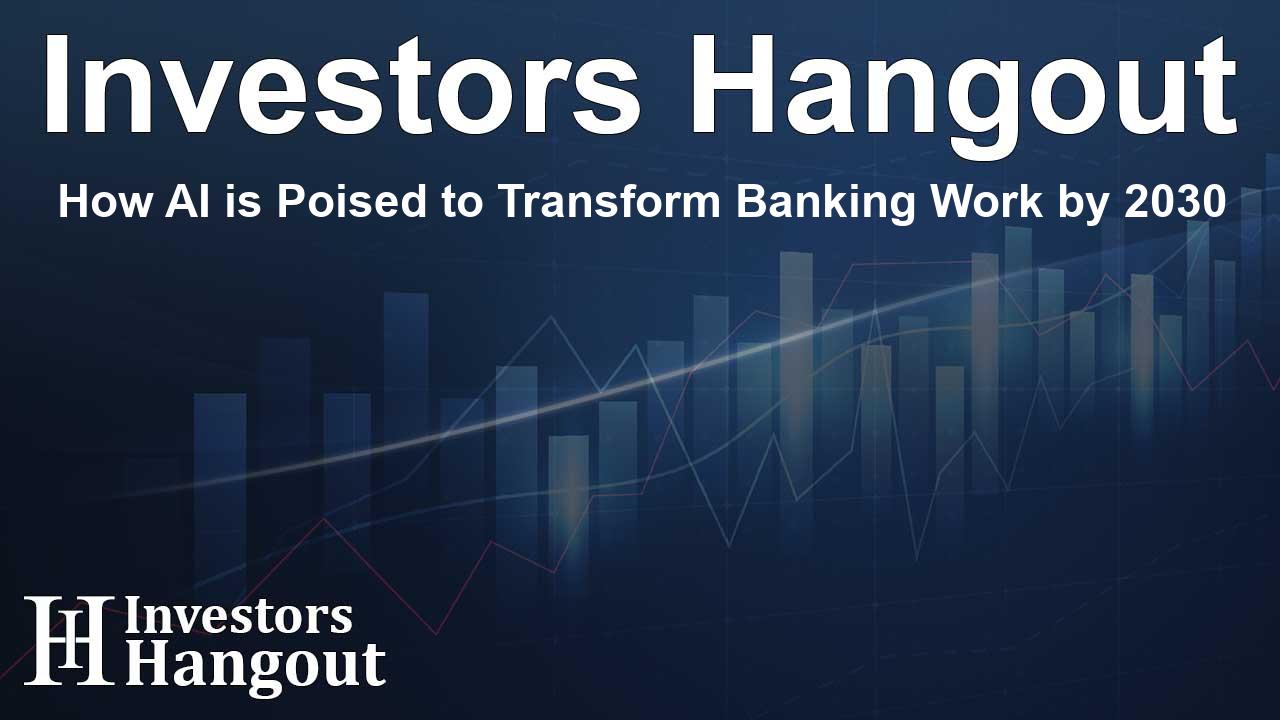The Future of AI in Banking: A Transformative Era
As the world hurtles towards the future, a significant shift is on the horizon in the banking sector. Sumeet Chabria, the insightful CEO of ThoughtLinks, posits that by 2030, we will witness a remarkable transformation where approximately 40% of banking operations, technology, and knowledge work will be redefined through the integration of artificial intelligence (AI). This projection is not merely a distant possibility; it is a rapidly evolving reality with tangible changes already occurring today.
Driving Forces Behind Transformation
The catalyst for this sweeping change is the convergence of several technological advancements. The emergence of generative and agentic AI, combined with democratized data and cloud-native infrastructure, is creating a fertile ground for intelligent automation. As we transition to this new era, it is evident that the nature of work in banking is not just changing, but fundamentally transforming. We are moving towards a model where AI operates alongside humans, acting as digital workers that enhance human capabilities and productivity.
Embedding AI into Banking Systems
Chabria emphasizes that advanced AI capabilities are increasingly integrated into vendor systems, platforms, and tools. Though many of these systems are not yet fully utilized, their gradual activation is quietly propelling structural changes within banking operations and management.
A Strategic Blueprint for Success
To thrive amidst these changes, banks are tasked with aligning four strategic pillars. These pillars form a practical blueprint for sustainable growth and value creation:
- AI-First Technology Strategy
- Enterprise-Wide Transformation
- Growth and Efficiency through AI
- Future-Ready Workforce Strategies
Integrating these elements will allow banking institutions to enhance their operational efficiencies while remaining competitive in a rapidly evolving landscape.
Current Changes in the Banking Landscape
The reinvention driven by AI extends across every facet of banking. For example, agentic AI is particularly effective in enhancing relationship-driven interactions, improving customer and employee experiences. The role of AI can already be seen in:
- Consumer Banking: Virtual AI assistants offer personalized assistance by anticipating customer needs and responding to inquiries.
- Wealth Management: AI tools analyze complex data to provide tailored insights, significantly aiding financial advisors.
- Credit and Lending: Conversational AI streamlines the application process and enhances risk management.
- Customer Service: Intelligent agents handle routine queries, resulting in lowered operational costs and improved service experiences.
- Risk and Compliance: Early AI deployments monitor transactions in real-time to identify anomalies and mitigate risks.
- Global Markets: AI supports market analysts by distilling vast amounts of data and providing critical insights for informed decision-making.
In the realm of technology and operations, where a substantial portion of workforce and supplier functions reside, AI is fundamentally altering the construction, testing, and delivery of banking systems. As emerging efficient processes take center stage, banks are being compelled to rethink their roles, supplier strategies, and entire operating models.
Embracing the Change
These changes raise key strategic questions for financial institutions:
Growth & Efficiency: How to scale AI initiatives while ensuring measurable returns on investment?
Operations: Which processes are optimal for AI integration, and how can we simplify our organizational frameworks in the process?
Risk & Controls: How to establish secure and adaptive safeguards as automation becomes commonplace?
Talent & Culture: What tasks will be affected, and how can we reshape roles to view AI as an opportunity rather than a threat?
For leaders in this rapidly advancing field, clarity in vision, a strong commitment to embracing change, and rallying the right talent around effective strategies are essential for navigating the promising, yet complex landscape of AI in banking.
Looking Towards 2030
As this transformative journey unfolds, it is crucial for banking professionals to maintain a forward-thinking approach. Institutions must look beyond individual AI use cases and assess the holistic impact of AI on their daily operations. Continuous evaluation of alignment between strategic goals and operational activities will be key to success.
"The successful players in this new era will not only adopt AI but will fundamentally redesign their operations around it," Chabria concludes. "True strategic advantage will emerge from the ability to enhance human ingenuity and elevate performance."
About ThoughtLinks
ThoughtLinks is a forward-thinking advisory firm specializing in the strategic implementation of AI and fostering enterprise transformation within banking and capital markets. Under the guidance of CEO Sumeet Chabria, the firm collaborates with major organizations to drive technology-enabled growth and efficiency, leveraging a wealth of experience from its team of former global executives.
True to its name, ThoughtLinks strives to bridge the gap between business needs and top-tier solutions, fostering innovation across the financial services landscape and empowering human potential to thrive amidst change.
Frequently Asked Questions
What is the main projection by ThoughtLinks regarding AI in banking?
ThoughtLinks CEO Sumeet Chabria projects that by 2030, 40% of banking operations will be redefined by AI technology.
What are the strategic pillars banks should focus on?
Banks should align their operations around AI-First Technology, Enterprise-Wide Transformation, Growth and Efficiency through AI, and Future-Ready Workforce Strategies.
How is AI currently transforming consumer banking?
AI enhances consumer banking through virtual assistants that anticipate customer needs and provide personalized service.
What challenges do banks face with AI adoption?
Challenges include scaling AI effectively, modernizing operational structures, and preparing the workforce to leverage AI technologies.
What is the vision for banks in 2030 according to Sumeet Chabria?
The vision for 2030 emphasizes thoughtful redesign of organizations around AI to maintain human ingenuity as central to innovation and operational efficiency.
About The Author
Contact Lucas Young privately here. Or send an email with ATTN: Lucas Young as the subject to contact@investorshangout.com.
About Investors Hangout
Investors Hangout is a leading online stock forum for financial discussion and learning, offering a wide range of free tools and resources. It draws in traders of all levels, who exchange market knowledge, investigate trading tactics, and keep an eye on industry developments in real time. Featuring financial articles, stock message boards, quotes, charts, company profiles, and live news updates. Through cooperative learning and a wealth of informational resources, it helps users from novices creating their first portfolios to experts honing their techniques. Join Investors Hangout today: https://investorshangout.com/
The content of this article is based on factual, publicly available information and does not represent legal, financial, or investment advice. Investors Hangout does not offer financial advice, and the author is not a licensed financial advisor. Consult a qualified advisor before making any financial or investment decisions based on this article. This article should not be considered advice to purchase, sell, or hold any securities or other investments. If any of the material provided here is inaccurate, please contact us for corrections.

